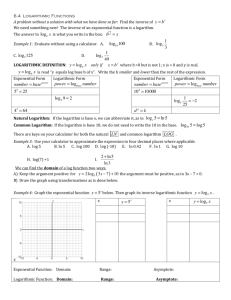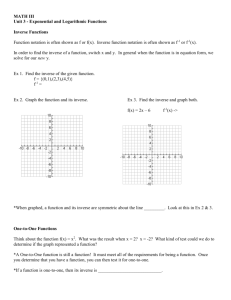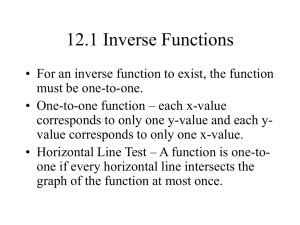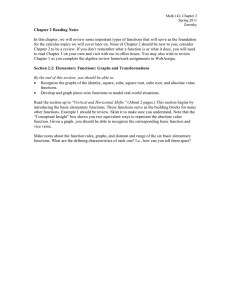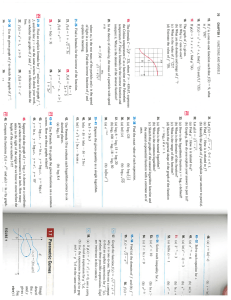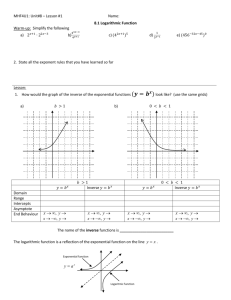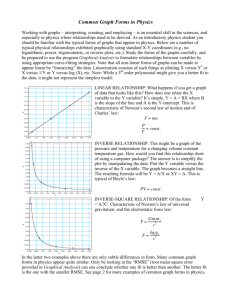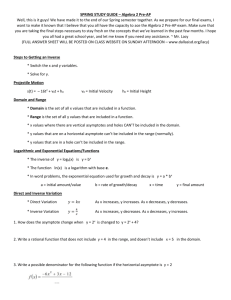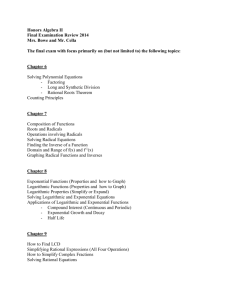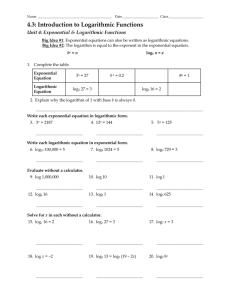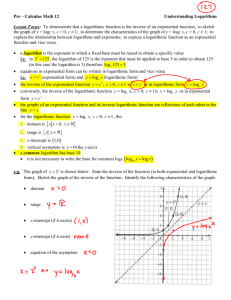Exam 3 Study Guide
advertisement
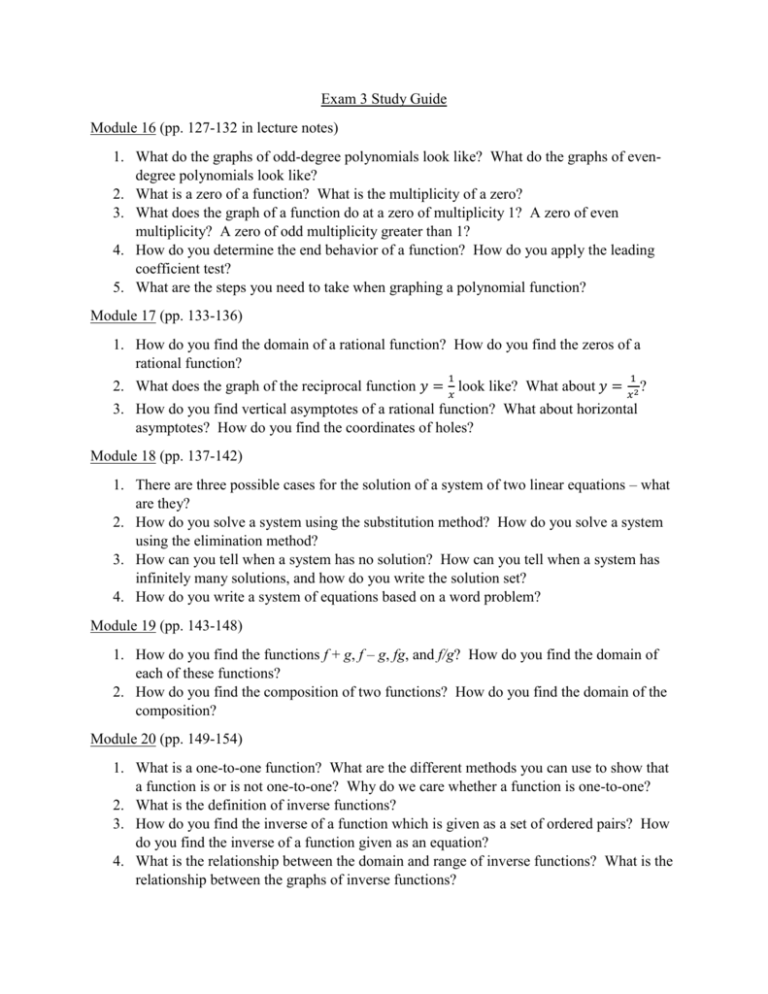
Exam 3 Study Guide Module 16 (pp. 127-132 in lecture notes) 1. What do the graphs of odd-degree polynomials look like? What do the graphs of evendegree polynomials look like? 2. What is a zero of a function? What is the multiplicity of a zero? 3. What does the graph of a function do at a zero of multiplicity 1? A zero of even multiplicity? A zero of odd multiplicity greater than 1? 4. How do you determine the end behavior of a function? How do you apply the leading coefficient test? 5. What are the steps you need to take when graphing a polynomial function? Module 17 (pp. 133-136) 1. How do you find the domain of a rational function? How do you find the zeros of a rational function? 1 1 2. What does the graph of the reciprocal function 𝑦 = 𝑥 look like? What about 𝑦 = 𝑥 2 ? 3. How do you find vertical asymptotes of a rational function? What about horizontal asymptotes? How do you find the coordinates of holes? Module 18 (pp. 137-142) 1. There are three possible cases for the solution of a system of two linear equations – what are they? 2. How do you solve a system using the substitution method? How do you solve a system using the elimination method? 3. How can you tell when a system has no solution? How can you tell when a system has infinitely many solutions, and how do you write the solution set? 4. How do you write a system of equations based on a word problem? Module 19 (pp. 143-148) 1. How do you find the functions f + g, f – g, fg, and f/g? How do you find the domain of each of these functions? 2. How do you find the composition of two functions? How do you find the domain of the composition? Module 20 (pp. 149-154) 1. What is a one-to-one function? What are the different methods you can use to show that a function is or is not one-to-one? Why do we care whether a function is one-to-one? 2. What is the definition of inverse functions? 3. How do you find the inverse of a function which is given as a set of ordered pairs? How do you find the inverse of a function given as an equation? 4. What is the relationship between the domain and range of inverse functions? What is the relationship between the graphs of inverse functions? Module 21 (pp. 155-160) 1. What is the equation of the exponential function with base a? What does the graph look like if a > 1? What does the graph look like if 0 < a < 1? What is the horizontal asymptote of these graphs? 2. How can you solve exponential equations of the form 𝑎𝑏 = 𝑎𝑐 ? 3. What is the formula for finding the balance in an account if the interest is compounded a finite number of times per year? What is the formula for finding the account balance if interest is compounded continuously? Module 22 (pp. 161-170) 1. What exponential equation is equivalent to the statement 𝑦 = log 𝑎 𝑥? What is 𝑎log𝑎 𝑥 ? What is log 𝑎 𝑎 𝑥 ? 2. What does the graph of the logarithmic function look like if the base a > 1? What does the graph look like if 0 < a < 1? What is the vertical asymptote of these graphs? 3. What are the three major properties of logarithms? What is the logarithm of 1? What is log 𝑎 𝑎? 4. What is the common logarithm? What is the natural logarithm? Module 23 (pp. 171-174) 1. How do you solve an exponential equation of the form 𝑎 𝑓(𝑥) = 𝑏? 2. How do you solve a logarithmic equation of the form log 𝑎 𝑓(𝑥) = 𝑏? A log equation of the form log 𝑎 𝑓(𝑥) = log 𝑎 𝑔(𝑥)? 3. What should you always do after solving a logarithmic equation? Module 24 (pp. 175-178) 1. What is the general exponential equation which models the population? Given the equation, how do you find the initial population? What condition tells you whether the population is growing or decaying? 2. How can you find the growth/decay model if you are only given the initial population and the population after some time t? 3. If you are asked to find the population at some time t, what do you do? What if you are asked at what point the population will reach a particular value?
